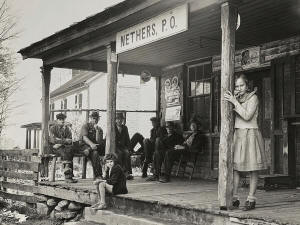From Benjamin Franklin to Pony Express to anthrax: How the US Postal
Service shaped a nation
[July 26, 2025]
By SUSAN HAIGH
The one government agency that still reaches nearly every American daily
— undeterred by rain, sleet, snow or even gloom of night — turns 250 on
Saturday.
Established in 1775, when the Second Continental Congress appointed
Benjamin Franklin as postmaster general, the postal service predates the
United States. It was launched nearly a year before the colonies
declared their break from British rule.
“The country may not even have come into existence but for the Postal
Service,” said Stephen Allen Kochersperger, the postal service historian
and a former local postmaster.
While it now grapples with concerns over its financial viability in the
modern era, the agency has had a long and colorful history that helped
shape the nation. It has grown from serving the 13 colonies to
delivering more mail than any other postal system in the world, reaching
nearly 169 million addresses and employing more than 635,000 people.
A new postal service
In those early days, creating an American postal system was a key
priority for the nation's founders, who needed to communicate with the
Continental Army and the colonies. When the Continental Congress met in
1775, it appointed Franklin as the first postmaster because he had
served in the British postal service for North America.
The early postal system also became crucial to unifying the diverse,
fragmented colonies into a nation by spreading ideas of liberty and
independence through letters, newspapers and pamphlets.
“People were reading, getting ideas of what it would be like to be an
independent country,” Kochersperger said.

Westward expansion
When the U.S. Constitution was ratified, Congress was granted power to
establish post offices and mail routes that were first used by mail
carriers on horseback and later upgraded for stagecoaches. Some evolved
into highways still used today.
Initially running north–south along the East Coast, post roads later
extended westward. Historians have said this aided settler expansion
into Native lands and was intertwined with the displacement of tribes.
As western migration accelerated, mail was sent by ship from New York to
Central America and on to California. Delivery typically took two to
three months.
The Pony Express, operated by private carriers, was started to speed
things up. A relay system of riders on horseback carried mail from
California to Missouri, the furthest westward railroad stop. The
1,800-mile (2,900-kilometer) journey took 10 days.
While legendary, it only lasted about 18 months, until Oct. 26, 1861.
The service was scuttled by the Civil War and made obsolete with the
advent of the telegraph, said Daniel Piazza, chief curator of philately
at the Smithsonian National Postal Museum.
Later, the transcontinental railroad reduced mail delivery from months
to days.
New types of delivery
Free mail delivery to homes began in earnest in 1863 in the nation’s
largest cities. It was initially created as a response to grief during
the Civil War. At the time, the only communication from a father,
brother, husband or son usually came through letter-writing. Women lined
up daily at post offices, awaiting word. They sometimes got their own
letters back, with a note saying their loved one had been killed.
Postal officials in Cleveland decided to take mail to people’s homes out
of compassion.
[to top of second column]
|

This photo provided by the Library of Congress shows people at the
Nethers, Va., post office in Oct. 1935, during the Great Depression.
(Arthur Rothstein/Farm Security Administration/Library of Congress
via AP)

Enthusiasm for home delivery spread quickly, and people living in rural
areas wanted it, too. Despite logistical challenges, rural free delivery
began expanding rapidly around 1900. By the 1920s, mail carriers mostly
had replaced horse-drawn wagons with automobiles.
Around that time, mail started being sent by airplane as well. The
nation’s first regularly scheduled airmail service began on May 15,
1918. The initial routes were between Washington, D.C., Philadelphia and
New York, using Army pilots and planes.
The post office soon took over air mail, running operations for nine
years until turning to fledgling private airline companies, some of
which remain major airlines.
In the early days, flights were so dangerous that some pilots dubbed
themselves the Suicide Club. Thirty-two pilots were killed.
Major changes to the system
The postal service saw major growth during President Franklin Delano
Roosevelt's time in office. His New Deal plan to address the Great
Depression put people to work building 2,000 new post offices.
After World War II, a booming economy and growing population led to a
surge in mail. To handle the increasing volume, the post office needed a
faster alternative to manual sorting.
So, on July 1, 1963, each post office was given a five-digit ZIP code.
Previously, clerks had to memorize thousands of points of address
information so they could sort the mail, Kochersperger said.
The public was skeptical at first, balking at more numbers. So, the post
office came up with a friendly cartoon character named Mr. ZIP, who
helped convince people their mail would arrive faster.
By 1970, postal workers were angry over low wages and a strike was
called by leaders of the National Association of Letter Carriers union
in New York. Eventually about 200,000 workers joined the postal
stoppage, which led to the Postal Reorganization Act of 1970. It
authorized collective bargaining rights for postal workers and
transformed the taxpayer-supported Post Office Department into the
United States Postal Service, a financially self-sustaining and
independent agency within the executive branch.
In more recent times, U.S. Postal Service workers have faced various
threats, including anthrax, a serious infectious bacterial disease.
Weeks after the Sept. 11, 2001, terrorist attacks, four threatening
letters contaminated with anthrax were sent through the mail. Two
workers at a mail distribution center in Washington, D.C. died after
breathing in the spores, and thousands were potentially exposed.
Three other people were killed, and more than a dozen were sickened.
The anthrax scare led to major changes in how mail was monitored and
sorted and how USPS workers protected themselves. Years later, they'd be
designated essential workers during the COVID-19 pandemic and don
protective gear again.
___
Haigh reported from Hartford, Conn.
All contents © copyright 2025 Associated Press. All rights reserved |